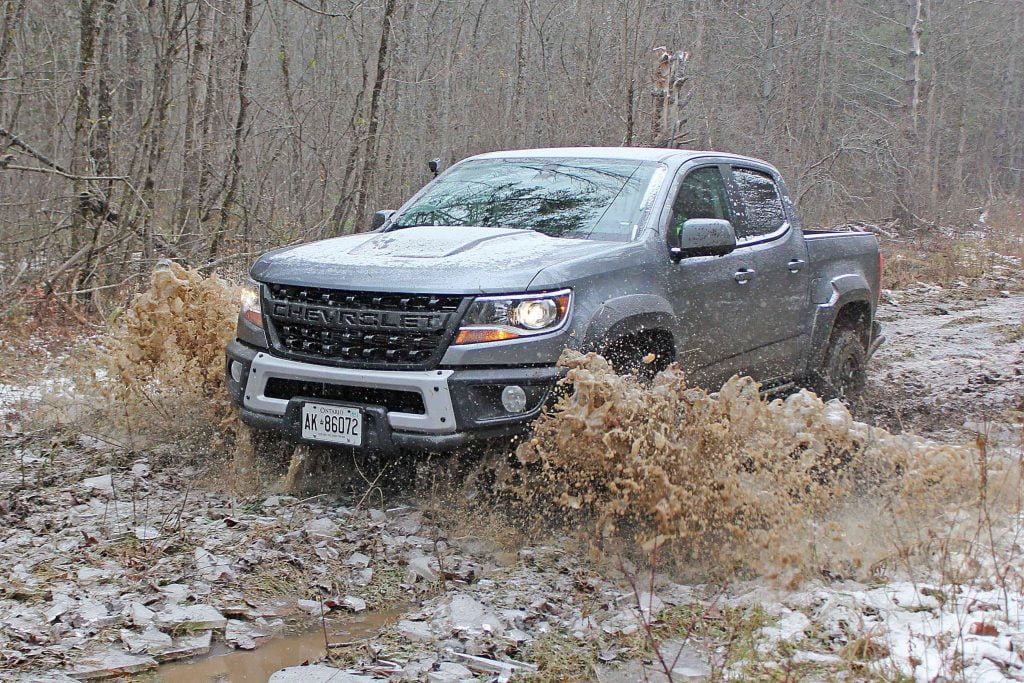RVers tow – it’s what they do. Because of this, they appreciate the torque and fuel economy a diesel engine-powered truck provides. Of course, only large diesel in HD trucks was available for decades. The manufacturers ignored half-tons.
That changed when Ram introduced the first half-ton specific diesel engine, a 3L powertrain, in 2014. That offering met with instant success if you consider that Ram expected the 3L to be ordered in just 5% of that year’s 1500 trucks. By year’s end, the actual order number was over 20%. Now, six years later, Ram is offering the third generation of its 3L EcoDiesel, while GM and Ford have joined the club with their small diesel offerings. Let’s look at what each is offering, as you may want to cross-shop them.
First, after a year’s absence from the market, Ram is back with its third-generation EcoDiesel. This year, Ram will sell its small diesel in any version of its 1500-series truck. This is not the case with all brands. This newest EcoDiesel is now producing a diesel torque of 480 lb-ft, in part. This also results in the highest available diesel half-ton tow rating of 12,560 lb.
Listed below are the significant design changes to the new EcoDiesel.
- A water-cooled turbocharger with a variable geometry turbine (VGT) increases efficiency and responsiveness.
- Redesigned cylinder head intake ports improve swirl and flow, increasing performance and fuel economy.
- The exhaust gas recirculation (EGR) system has been updated to a dual loop (low and high pressure) system. The added low-pressure circulation draws gases after the diesel particulate filter, thus minimizing turbocharger energy losses, which increases fuel economy.
- The compression ratio has been optimized to 16.0:1 from 16.5:1.
- High-pressure (29,000 psi) direct-injection fuel injector nozzles match the newly designed and optimized combustion chamber.
- Lightweight aluminum alloy pistons were completely redesigned to include thinner rings and low-friction coating on the pin and side skirts.
- NVH has been reduced by the off-setting piston pin by 0.3 mm from the centerline, thus, minimizing mechanical noises.
- The lower portion of the two-piece oil sump uses a lightweight sandwiched polymer/metal material that further reduces NVH.
- The dual vacuum pump system uses electric and a new mechanical low-friction pump with new blades that improve overall system efficiency.
- Ram EcoDiesel (also a V6 3.0L) makes 240hp and 420 lb-ft of torque.

Photo courtesy of GM
GM’s Duramax turbo-diesel engine displaces 3.0L and is designed as an inline-six-cylinder configuration. This straight long-block design sets it apart, and this detail is essential. Over at Ford and Ram, they use V-designs for their 3.0Ls, while this new Duramax instead took a page out of the book written by Cummins, which primarily uses straight-six blocks and is famous for it. Here are the particulars listed below.
- The aluminum block uses a variable-geometry turbo and a new low-pressure exhaust gas recirculation system to increase efficiency.
- The in-line design is vibration-free, and the power comes on smoothly.
- The GM 3.0L makes 277 hp and puts out 460 lb-ft of torque at 1500 rpm.
- A lightweight 10-speed automatic manages this diesel’s power – with a design emphasis on over-drive gearing.
A known feature of any diesel is fuel efficiency. GM wants its new turbo-diesel to be known for this quality in particular. So, knowing that gearing is also essential to fuel efficiency, they paired it with a new efficient 10-speed transmission. GM’s goal for the 3.0L Duramax at the drive event I attended was an estimated fuel target of 5.8L/100 km at 80 km/h. Driving it empty and gently, I was able to hit this target.

Photo courtesy of Ford
Ford has built a very quiet V6 diesel from a blank page, adding it to the Power Stroke family. I’ve driven it, stood beside it while idling and floored it uphill while towing. It is eerily quiet. This introduction was a true milestone in the history of the F-series, and today it’s available in most (but not all) the trim levels of the F-150. Here’s what the Ford design entails:
- A graphite/iron block architecture.
- A variable geometry turbocharger.
- 29,000 psi injection fuel rail and aluminum pistons.
- Its 3.0L V6 design makes 250 hp at 3,250 rpm and 440lb. ft of torque at 1,750 rpm.
- Its DEF (diesel exhaust fluid) system includes a particulate filter and high-pressure cooled exhaust gas recirculation technology to reduce emissions.
- The diesel is paired with Ford’s SelectShift 10-speed automatic transmission. This non-sequential transmission is also part of the fuel economy improvements Ford is seeking.
- Auto stop/start feature is standard on all F-150s; gas or diesel.
- Ford claims fuel consumption of 10.8 L /100km city and 8.0 L/100km highway for the 3.0L.
As for towing, the correctly configured diesel F-150 is rated to tow 11,400lb and has a payload of 2,020 lb. With this new Power Stroke in the stable, the F-150 offers customers an unequalled choice of seven engines.
These three small diesel engines now offer half-ton buyers a choice. As they are added to more trim packages, it also adds this option to the cheaper entry-level trucks. Fuel economy, massive torque, long life. What’s not to like?
Feature image courtesy of Dodge




